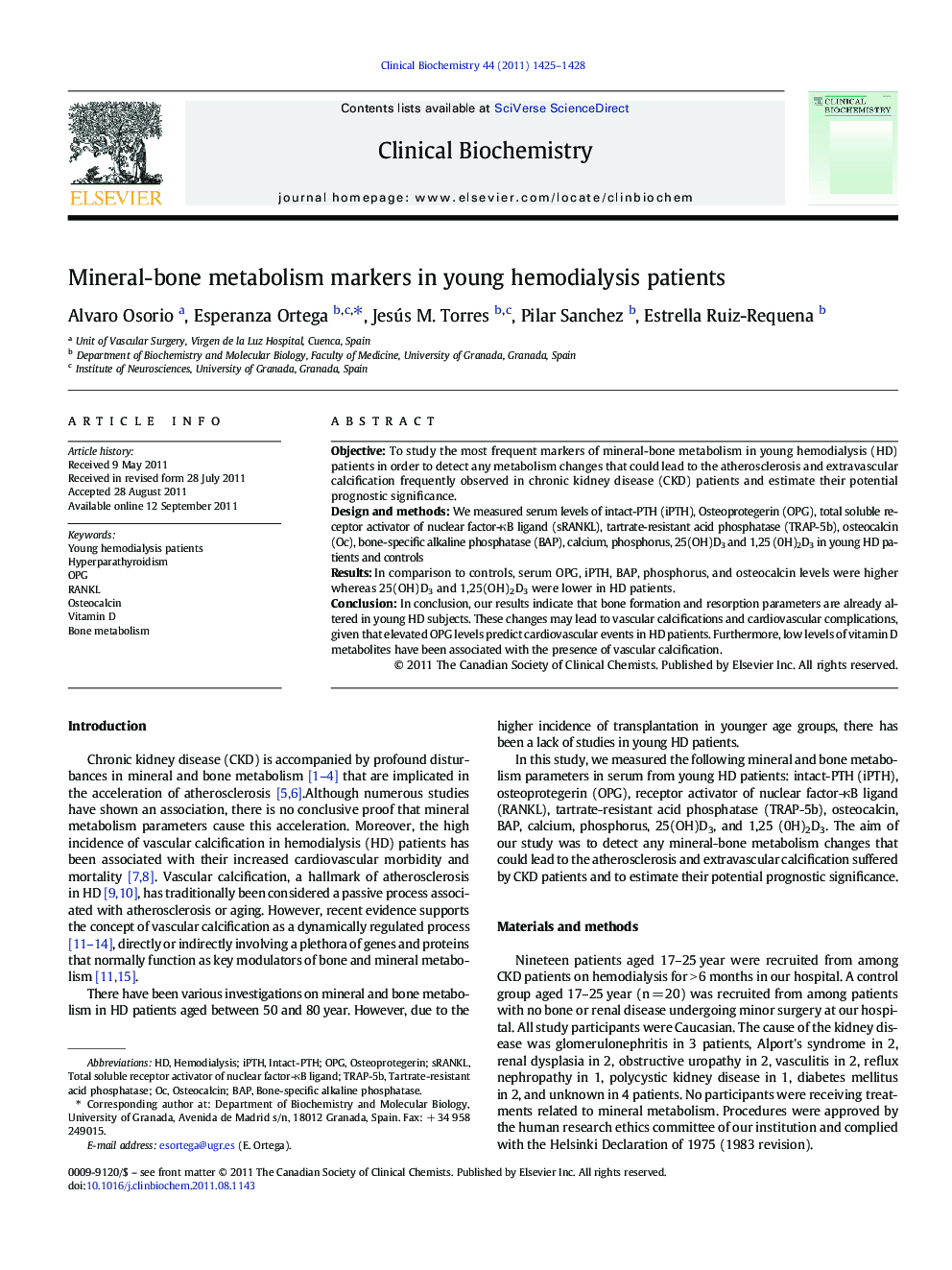| Article ID | Journal | Published Year | Pages | File Type |
|---|---|---|---|---|
| 1970835 | Clinical Biochemistry | 2011 | 4 Pages |
ObjectiveTo study the most frequent markers of mineral-bone metabolism in young hemodialysis (HD) patients in order to detect any metabolism changes that could lead to the atherosclerosis and extravascular calcification frequently observed in chronic kidney disease (CKD) patients and estimate their potential prognostic significance.Design and methodsWe measured serum levels of intact-PTH (iPTH), Osteoprotegerin (OPG), total soluble receptor activator of nuclear factor-κB ligand (sRANKL), tartrate-resistant acid phosphatase (TRAP-5b), osteocalcin (Oc), bone-specific alkaline phosphatase (BAP), calcium, phosphorus, 25(OH)D3 and 1,25 (0H)2D3 in young HD patients and controlsResultsIn comparison to controls, serum OPG, iPTH, BAP, phosphorus, and osteocalcin levels were higher whereas 25(OH)D3 and 1,25(OH)2D3 were lower in HD patients.ConclusionIn conclusion, our results indicate that bone formation and resorption parameters are already altered in young HD subjects. These changes may lead to vascular calcifications and cardiovascular complications, given that elevated OPG levels predict cardiovascular events in HD patients. Furthermore, low levels of vitamin D metabolites have been associated with the presence of vascular calcification.
